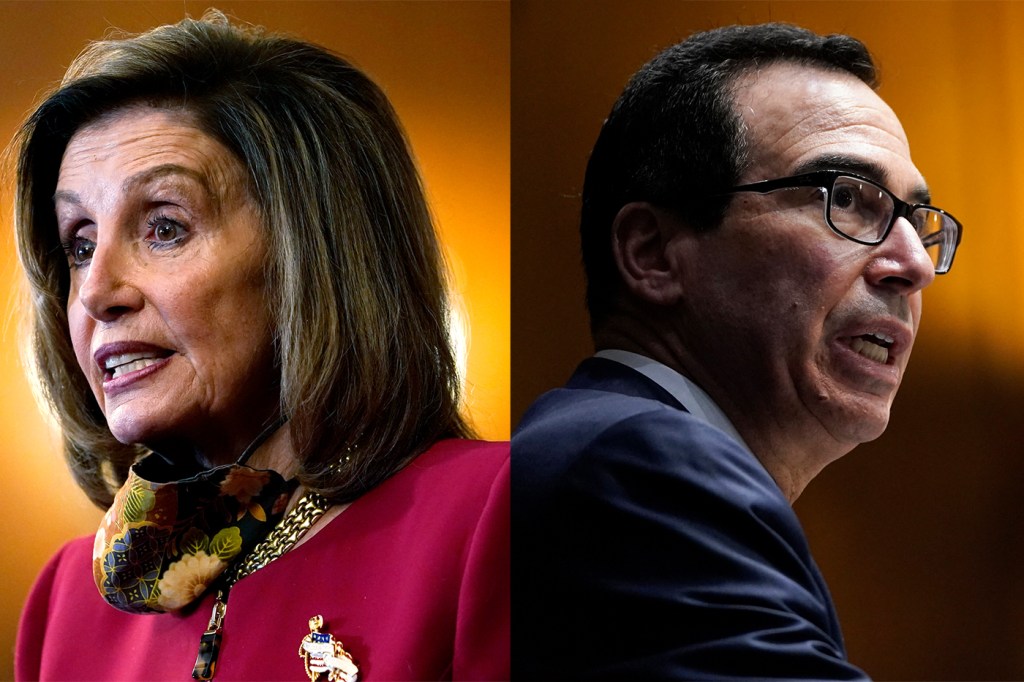Democrats and Republicans both strongly support new round of COVID-19 pandemic aid, study says

While White House and congressional negotiators take another stab at a pandemic relief package weeks out from Election Day, Democrats and Republicans across the country overwhelmingly support more aid, but continue to differ on how much to spend and where the money should go, a new survey by researchers from Northeastern, Harvard, Northwestern, and Rutgers has found.

David Lazer. Photo by Adam Glanzman/Northeastern University
In a rare display of agreement among a deeply polarized electorate, 88 percent of Democrats and 75 percent of Republicans support a follow-up to the four rounds of aid totalling $3 trillion that passed earlier this year, the survey found. They also agree that the next installment should come in the form of direct cash payments to individuals and businesses.
Support among racial demographics was also strikingly similar, suggesting that the economic pain is felt broadly and another injection of federal money is urgently needed, says David Lazer, University Distinguished Professor of political science and computer and information sciences at Northeastern, and one of the researchers who conducted the study.
White respondents support more economic relief by 87 percent, Black respondents by 85 percent, Hispanic respondents by 83 percent, and Asian American respondents by 78 percent.
“Everyone is hurting,” Lazer says. “I’m not surprised that everyone feels like something should be done” in Washington to strike a deal.
But that may not be so easy. Deep, prolonged disagreements about where government aid should go continue to be an obstacle.
Democrats in Congress favor extended unemployment insurance and funding for hospitals, schools, small businesses, the Postal Service, and state and local governments. Republicans in Congress oppose support to states and cities, but favor more limited unemployment insurance benefits.
Facing the judgment of voters on Nov. 3 may spur political leaders into action after on-again, off-again talks failed to yield a deal, Lazer says.
“Nobody wants to be seen as blameworthy,” he says. “With the election coming up, it’s going to be a very strong incentive not to be seen as the party that prevented struggling people from getting the help they need.”
The most recent round of aid came in March, but subsequent attempts on a fifth relief package have stalled. House Speaker Nancy Pelosi and Treasury Secretary Steve Mnuchin have been meeting in an attempt to strike a deal.
The survey of nearly 20,000 U.S. residents took place Sept. 4-27, before a 90-minute meeting between the two in Pelosi’s office at the Capitol.
The findings come as more industries warn of layoffs, furloughs, and other money-saving measures unless Congress and the Trump administration reach a deal soon. The airline industry has been among the hardest hit due to the slowdown in global air travel, and big job cut announcements could come soon barring additional federal aid. U.S. airlines are on the verge of shedding tens of thousands of jobs, laying off pilots, mechanics, baggage handlers, and flight attendants.
New applications for unemployment benefits dipped last week but remained between 800,000 and 900,000 for the fifth straight week, reflecting a labor market recovery that is losing steam, Labor Department data showed.
After negotiations on a fifth relief package collapsed in July, President Trump signed an executive order providing a $400 weekly unemployment supplement for six weeks. But those funds ended in late September, adding even more urgency to the latest round of talks.
For media inquiries, please contact media@northeastern.edu.





